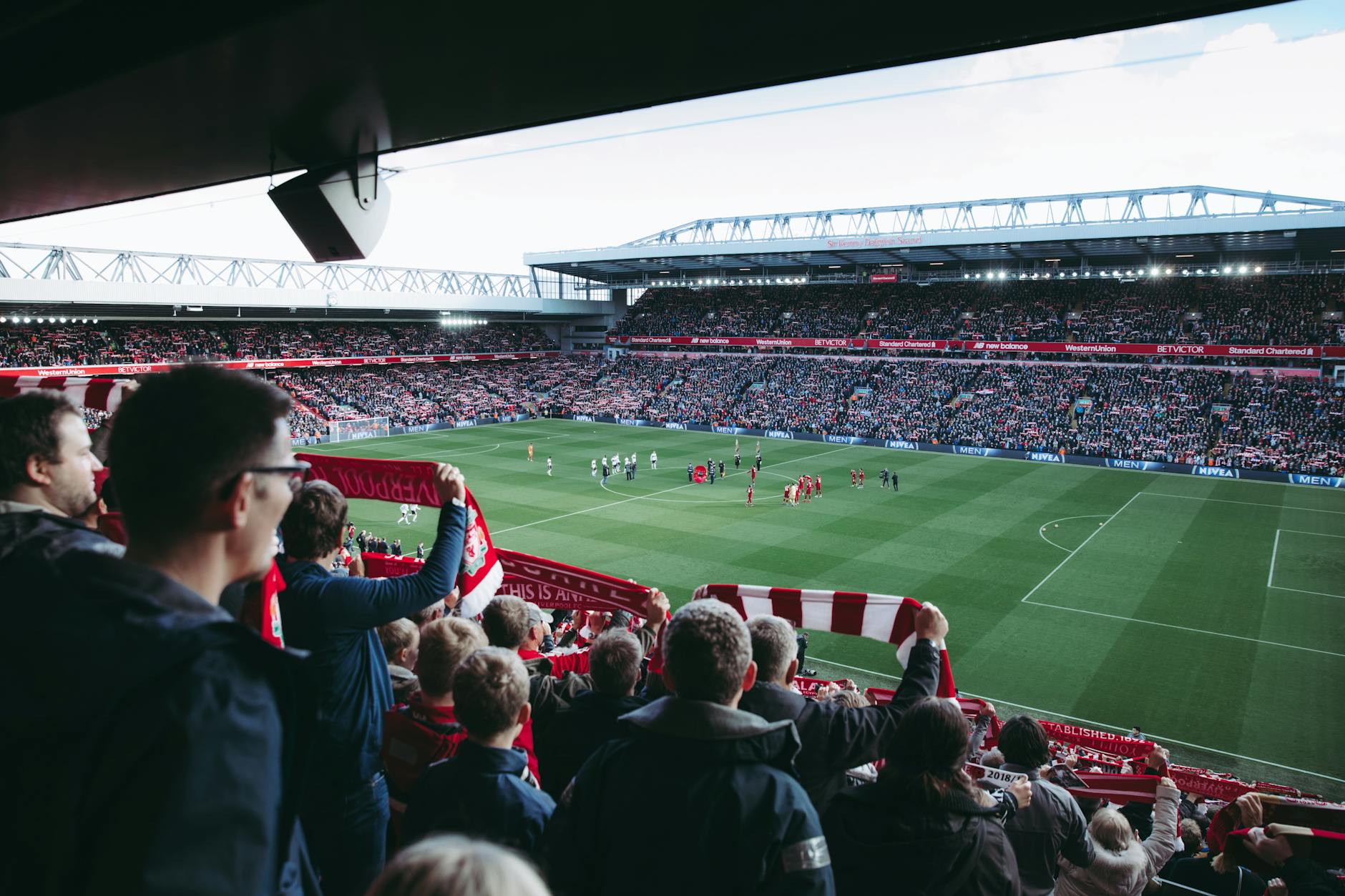Soccer in the Digital Age: Social Media’s Role

“`html
The Evolution of Soccer Coverage through Social Media
In the past, soccer fans relied heavily on traditional media such as television broadcasts, newspapers, and radio to stay updated on their favorite teams and players. However, the advent of social media has revolutionized soccer coverage, providing fans with unprecedented access and real-time updates. Platforms like Twitter, Facebook, and Instagram have become integral in the dissemination of soccer news, scores, and highlights, transforming the way the sport is consumed on a global scale.
The shift from traditional media to digital platforms has made soccer more accessible to fans around the world. Live-tweeting of major soccer events such as the FIFA World Cup or the UEFA Champions League has become a norm, allowing fans to receive minute-by-minute updates and engage in discussions as the action unfolds. These platforms offer a level of interactivity that traditional media cannot match, enabling fans to share their reactions, opinions, and analyses in real-time.
Moreover, social media has bridged the gap between fans and their favorite players and teams. Official accounts and personal profiles of soccer stars offer behind-the-scenes content, training footage, and personal insights, creating a more intimate connection between fans and the sport. This direct interaction fosters a sense of community and loyalty, as fans feel more involved in the lives and careers of their soccer idols.
Live streaming on platforms such as YouTube and Facebook Live has also played a significant role in transforming soccer coverage. Fans can now watch matches, press conferences, and other soccer-related events live from anywhere in the world. This increased accessibility has not only expanded the sport’s global reach but has also democratized the way fans consume soccer content.
In conclusion, the integration of social media into soccer coverage has not only enhanced the accessibility and immediacy of information but also created an interactive and engaging experience for fans. As digital platforms continue to evolve, their role in shaping the future of soccer coverage is set to become even more significant.
Engagement and Interaction: Connecting Fans and Players
In the digital age, social media has revolutionized the way soccer players connect with their fans, creating a more intimate and direct line of communication. Platforms such as Twitter, Instagram, and TikTok have become essential tools for players to share their lives, interact with their followers, and build their personal brands.
Through these channels, players offer glimpses into their daily routines, training sessions, and personal moments, fostering a sense of closeness that was previously unattainable. Twitter, for instance, allows players to engage in real-time conversations with fans, answer questions, and express their views on various topics. Instagram provides a visual diary, where players post photos and stories that give fans a behind-the-scenes look into their lives, both on and off the pitch. TikTok, with its short-form videos, has become a popular platform for showcasing skills, participating in viral challenges, and sharing humorous content.
Notable examples of player-fan interactions include Cristiano Ronaldo’s Instagram, where he regularly shares updates and personal milestones, and Marcus Rashford’s Twitter, which he has used to advocate for social causes and engage with his supporters. These interactions not only strengthen the bond between players and fans but also humanize the athletes, making them more relatable and accessible.
Social media campaigns have also played a significant role in connecting soccer players with their audience. Campaigns such as #StayAtHomeChallenge during the COVID-19 pandemic saw players from around the world sharing videos of themselves practicing at home, encouraging fans to do the same and stay safe. Influencers within the soccer community, including former players and sports journalists, amplify these efforts by sharing content and engaging in discussions, further bridging the gap between the sport and its followers.
Overall, the integration of social media in soccer has transformed the way players and fans interact, fostering a more connected and engaged community. By leveraging these platforms, players can effectively communicate with their audience, build their personal brands, and contribute to the global soccer conversation.
Marketing and Sponsorship: Monetizing Social Media Presence
In the digital age, the intersection of soccer and social media has revolutionized marketing and sponsorship opportunities for clubs, leagues, and players. Soccer organizations have adeptly harnessed the power of social media to create lucrative economic impacts, transforming online presence into substantial revenue streams. By leveraging platforms such as Instagram, Twitter, and Facebook, they can engage with millions of fans globally, making social media an indispensable tool for marketing and sponsorship.
One of the primary strategies employed by soccer organizations is the creation of targeted social media campaigns. These campaigns often feature high-quality, engaging content that resonates with fans, enhances brand loyalty, and attracts potential sponsors. For instance, clubs frequently post behind-the-scenes footage, player interviews, and match highlights, generating significant engagement and fostering a sense of community among followers. This active, engaging presence not only brings fans closer but also makes the club’s social media accounts highly attractive to sponsors seeking to tap into a dedicated fanbase.
Branded content is another effective strategy utilized by soccer entities. By incorporating sponsor logos, products, and messages into posts, clubs can seamlessly integrate marketing efforts without disrupting the user experience. This approach not only maximizes exposure for sponsors but also maintains the authenticity and appeal of the club’s social media content. Additionally, branded content can be tailored to different platforms, ensuring that marketing messages are optimized for each unique audience.
Influencer partnerships have also played a pivotal role in monetizing social media presence. High-profile players with substantial followings act as influencers, promoting brands through their personal social media channels. For example, Cristiano Ronaldo, one of the most followed athletes on Instagram, frequently partners with brands, resulting in significant financial gains both for himself and the collaborating companies. These influencer deals are often highly lucrative, as they capitalize on the player’s global reach and personal brand.
Successful social media campaigns have demonstrated the financial benefits of a strong online presence. A notable example is FC Barcelona’s collaboration with Nike, which harnessed the power of social media to launch new kits and merchandise. The campaign generated millions in revenue from merchandise sales and significantly boosted the club’s online engagement. Similarly, Manchester United’s partnership with Chevrolet has seen extensive use of social media to promote the brand, leading to a reported $559 million sponsorship deal.
In essence, social media has become a cornerstone for marketing and sponsorship in soccer, enabling clubs, leagues, and players to unlock new revenue streams and enhance their financial stability. By strategically leveraging social media through targeted campaigns, branded content, and influencer partnerships, soccer organizations can attract sponsors and monetize their online presence effectively.
Challenges and Controversies: Navigating the Digital Landscape
In the digital age, social media has revolutionized soccer, fostering unprecedented connectivity between players, clubs, and fans. However, this transformation is not without its challenges and controversies. One significant issue is cyberbullying. Soccer players, particularly those at the professional level, face relentless scrutiny and often become targets of online abuse. These negative interactions can have profound effects on their mental health and performance, prompting clubs to implement comprehensive digital media training and mental health support systems.
Misinformation is another pressing concern, as false news and unfounded rumors can spread rapidly on social platforms, potentially destabilizing clubs and affecting player morale. Soccer organizations are increasingly investing in media literacy programs to help players and staff discern credible sources and counteract the dissemination of inaccurate information.
The pressure on players to maintain a positive online presence is immense. With millions of followers monitoring their every move, players must navigate the fine line between personal expression and professional responsibility. Clubs often provide social media training to help athletes build a constructive online persona while safeguarding their privacy. This training includes guidelines on content sharing, interaction with fans, and managing negative comments.
To manage these risks, regulatory measures are being introduced at various levels. Governing bodies like FIFA and UEFA are working on frameworks to ensure a safer digital environment for all stakeholders in soccer. These regulations aim to curb cyberbullying, protect players’ rights, and promote a more respectful online discourse.
Looking ahead, the future of social media in soccer holds both promise and potential pitfalls. Emerging technologies such as artificial intelligence and blockchain could offer new ways to enhance fan engagement and ensure the integrity of information. As the digital landscape continues to evolve, it will be crucial for the soccer community to adapt and implement strategies that harness the benefits of social media while mitigating its inherent risks.
